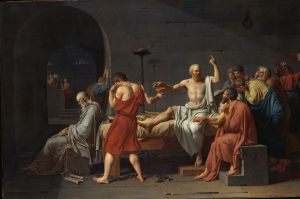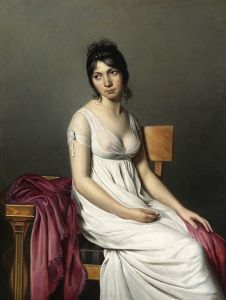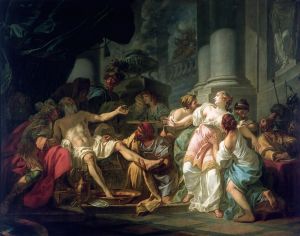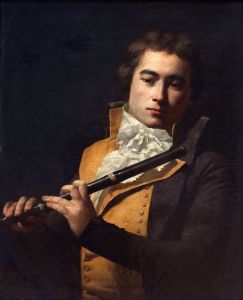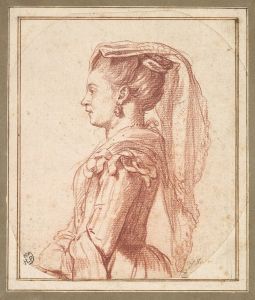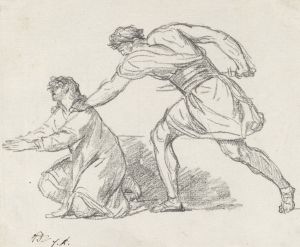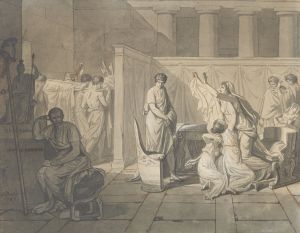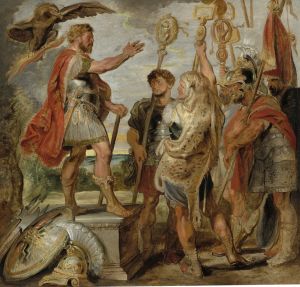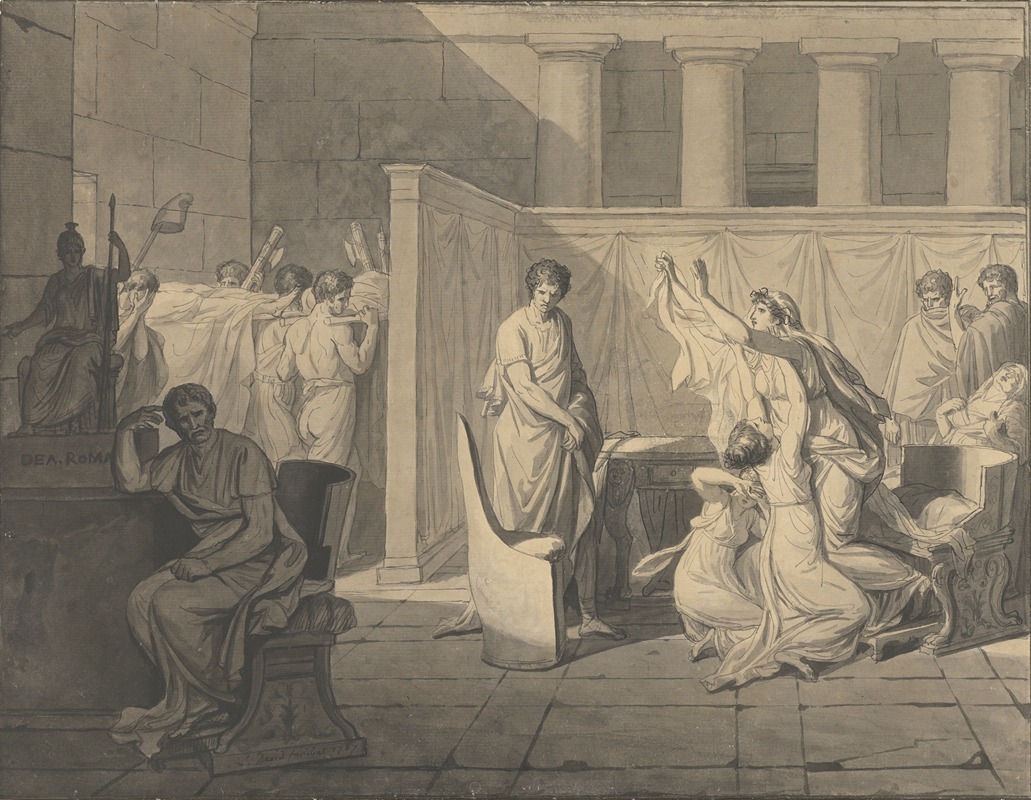
The Lictors Bringing Brutus the Bodies of His Sons
A hand-painted replica of Jacques Louis David’s masterpiece The Lictors Bringing Brutus the Bodies of His Sons, meticulously crafted by professional artists to capture the true essence of the original. Each piece is created with museum-quality canvas and rare mineral pigments, carefully painted by experienced artists with delicate brushstrokes and rich, layered colors to perfectly recreate the texture of the original artwork. Unlike machine-printed reproductions, this hand-painted version brings the painting to life, infused with the artist’s emotions and skill in every stroke. Whether for personal collection or home decoration, it instantly elevates the artistic atmosphere of any space.
"The Lictors Bringing Brutus the Bodies of His Sons" is a significant neoclassical painting by the French artist Jacques-Louis David, completed in 1789. This artwork is renowned for its dramatic portrayal of a historical event from ancient Rome, reflecting the themes of civic virtue and personal sacrifice that were central to the neoclassical movement and the political climate of the time.
The painting depicts a scene from the life of Lucius Junius Brutus, the legendary founder of the Roman Republic. According to Roman history, Brutus was a staunch advocate for the republic and played a crucial role in overthrowing the last Roman king, Tarquin the Proud. The narrative captured in David's painting occurs after Brutus discovers that his own sons have been involved in a conspiracy to restore the monarchy. In a demonstration of his commitment to the republic and its laws, Brutus condemns his sons to death, prioritizing the state over his personal feelings.
In the composition, Brutus is seated in the shadows on the left side of the canvas, his face partially obscured, conveying a sense of stoic resolve and inner turmoil. His posture is tense, with one hand gripping the armrest of his chair, while the other hand is clenched, suggesting the emotional conflict he experiences. The bodies of his sons are being brought in by the lictors, Roman officers who carried out sentences of punishment. The lictors are positioned centrally, emphasizing the gravity of the moment.
On the right side of the painting, Brutus's wife and daughters are depicted in a state of distress, their expressions and gestures conveying grief and despair. This contrast between the emotional turmoil of the women and the stoic demeanor of Brutus highlights the tension between personal loss and public duty. The use of light and shadow in the painting further enhances this emotional dichotomy, with the women bathed in light, drawing attention to their anguish, while Brutus remains in the shadows, symbolizing his isolation and the moral weight of his decision.
David's choice of subject matter and his execution of the painting reflect the political and cultural milieu of late 18th-century France. Completed on the eve of the French Revolution, the painting resonated with contemporary audiences who were grappling with questions of loyalty, sacrifice, and the greater good. The themes of republicanism and the moral responsibilities of leadership were particularly poignant during this period of political upheaval.
"The Lictors Bringing Brutus the Bodies of His Sons" is housed in the Louvre Museum in Paris, where it continues to be admired for its powerful narrative and masterful composition. Jacques-Louis David's work remains a quintessential example of neoclassical art, illustrating the artist's ability to convey complex historical and moral themes through his meticulous attention to detail and dramatic use of composition.





